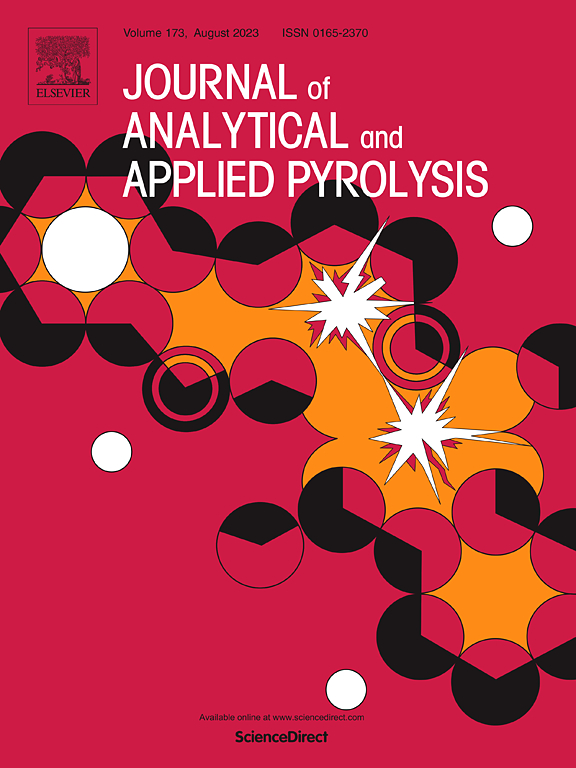High density polyethylene thermal pyrolysis: Kinetic and volatilization modeling
IF 5.8
2区 化学
Q1 CHEMISTRY, ANALYTICAL
引用次数: 0
Abstract
High-density polyethylene (HDPE), one of the most widely used plastics, holds immense potential for chemical recycling. However, accurately capturing its complex degradation behavior remains a key challenge. In this study, we introduce a novel methodology that integrates kinetic Monte Carlo (kMC) simulations, accounting for both melt-phase and gas-phase kinetics at a fundamental level, with vapor-liquid equilibrium models based on Peng-Robinson and PC-SAFT equations of state. This integrated framework captures the intricate dynamics of HDPE pyrolysis and enables detailed product characterization. The study’s predictions were validated through micro-pyrolyzer experiments at 550, 600, and 650 °C, using cutting-edge two-dimensional gas chromatography (2D-GC). Conversion profiles were validated using time-resolved experiments conducted at 450 and 500 °C. We also explore how pressure affects the product distribution, how reaction rates differ between the gas and melt phases, and the pivotal role of gas residence time. This innovative approach deepens our understanding of HDPE degradation and lays the groundwork for more efficient and scalable recycling technologies, bringing us closer to a sustainable future.
高密度聚乙烯热热解:动力学和挥发模拟
高密度聚乙烯(HDPE)是最广泛使用的塑料之一,具有巨大的化学回收潜力。然而,准确地捕捉其复杂的降解行为仍然是一个关键的挑战。在这项研究中,我们引入了一种新的方法,将动力学蒙特卡罗(kMC)模拟与基于Peng-Robinson和PC-SAFT状态方程的汽液平衡模型相结合,在基本水平上考虑了熔体相和气相动力学。这个集成的框架捕获了HDPE热解的复杂动力学,并实现了详细的产品表征。该研究的预测通过微热解实验在550,600和650°C,使用尖端的二维气相色谱(2D-GC)进行验证。在450°C和500°C下进行的时间分辨实验验证了转化曲线。我们还探讨了压力如何影响产物分布,气相和熔体相之间的反应速率差异,以及气体停留时间的关键作用。这种创新的方法加深了我们对HDPE降解的理解,为更高效、可扩展的回收技术奠定了基础,使我们更接近可持续发展的未来。
本文章由计算机程序翻译,如有差异,请以英文原文为准。
求助全文
约1分钟内获得全文
求助全文
来源期刊
CiteScore
9.10
自引率
11.70%
发文量
340
审稿时长
44 days
期刊介绍:
The Journal of Analytical and Applied Pyrolysis (JAAP) is devoted to the publication of papers dealing with innovative applications of pyrolysis processes, the characterization of products related to pyrolysis reactions, and investigations of reaction mechanism. To be considered by JAAP, a manuscript should present significant progress in these topics. The novelty must be satisfactorily argued in the cover letter. A manuscript with a cover letter to the editor not addressing the novelty is likely to be rejected without review.

 求助内容:
求助内容: 应助结果提醒方式:
应助结果提醒方式:


